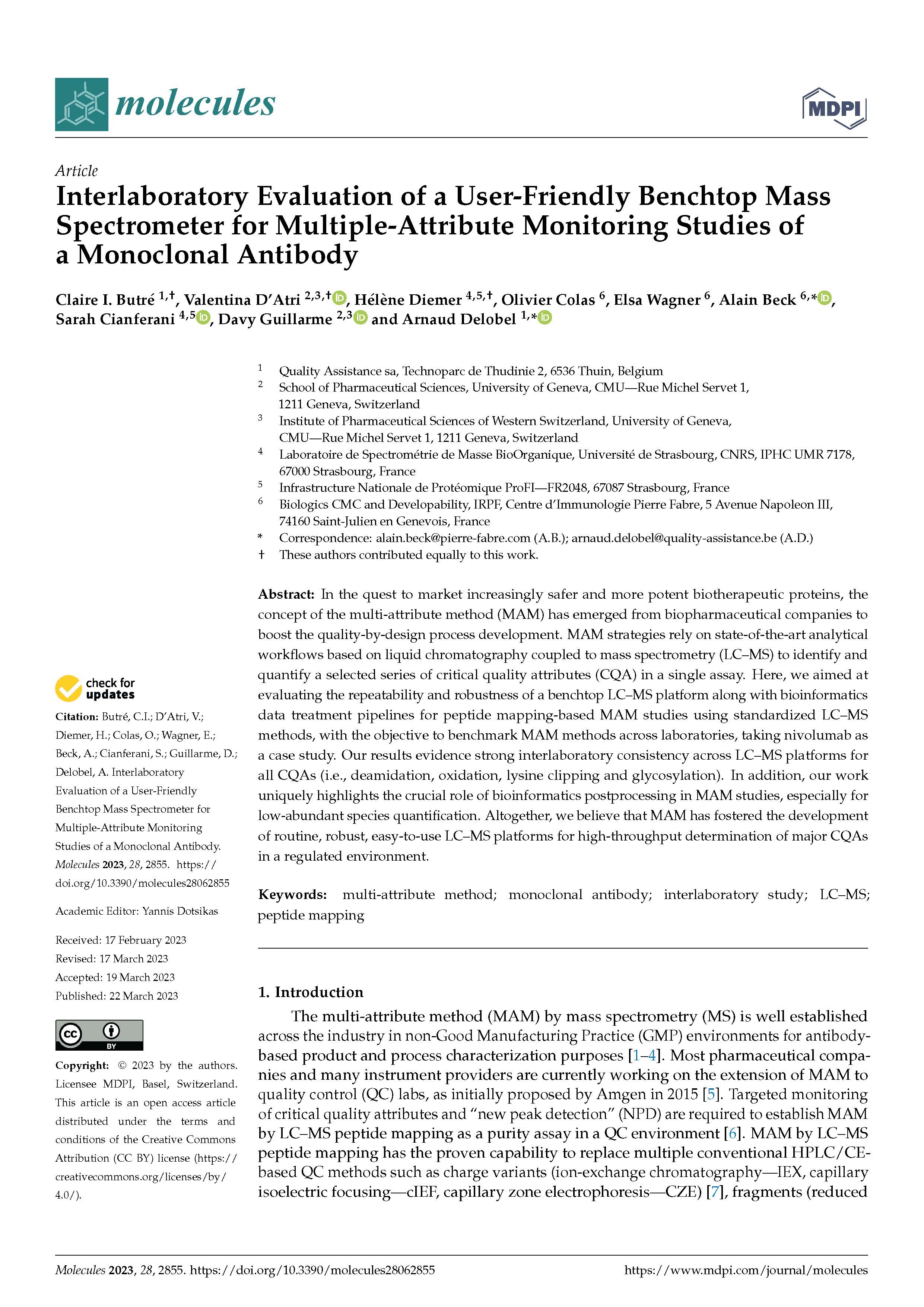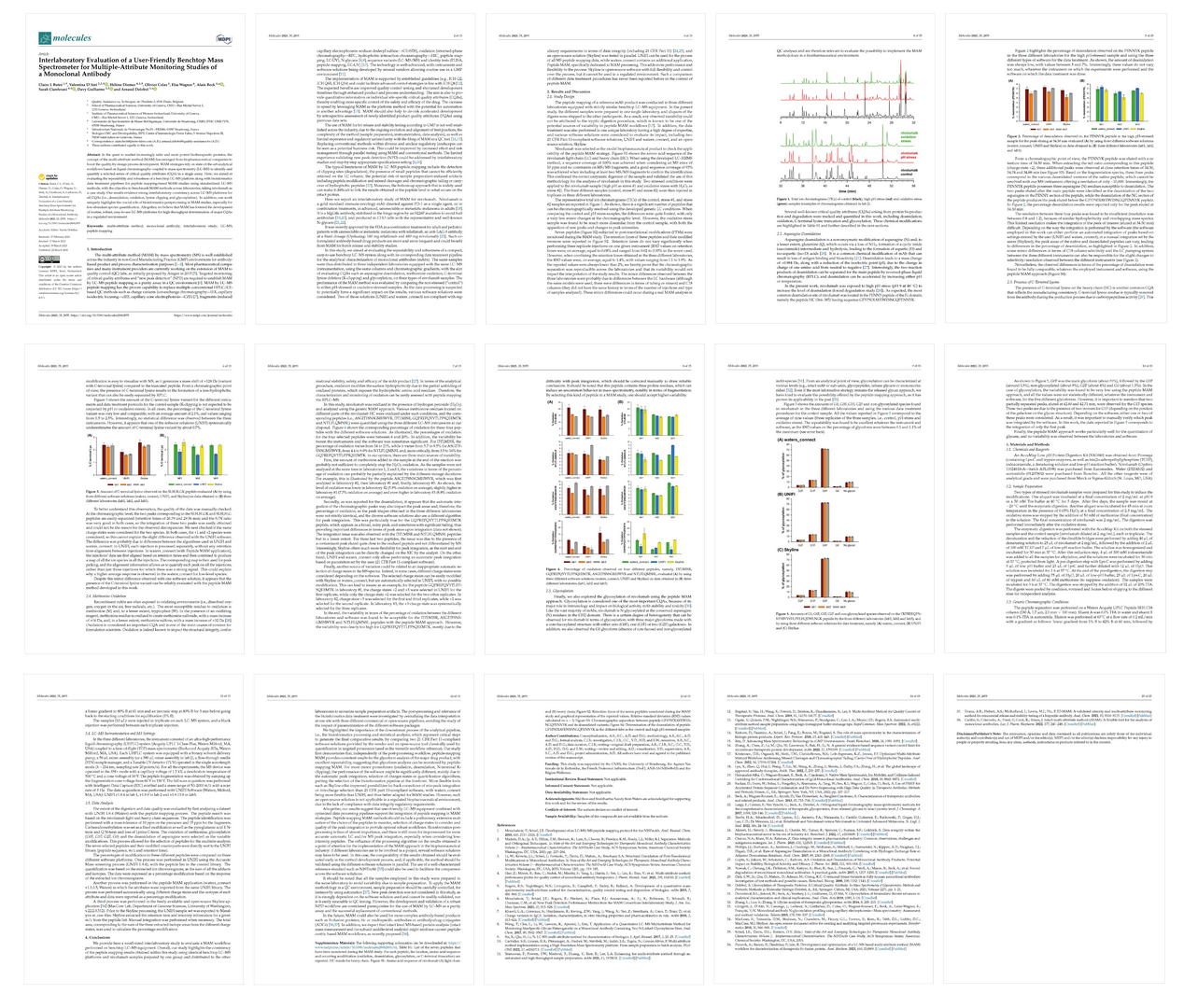Interlaboratory Evaluation of a User-Friendly Benchtop Mass Spectrometer for Multiple-Attribute Monitoring Studies of a Monoclonal Antibody

(1) Quality Assistance sa, Technoparc de Thudinie 2, 6536 Thuin, Belgium
(2) School of Pharmaceutical Sciences, University of Geneva, CMU—Rue Michel Servet 1, 1211 Geneva, Switzerland
(3) Institute of Pharmaceutical Sciences of Western Switzerland, University of Geneva, CMU—Rue Michel Servet 1, 1211 Geneva, Switzerland
(4) Laboratoire de Spectrométrie de Masse BioOrganique, Université de Strasbourg, CNRS, IPHC UMR 7178, 67000 Strasbourg, France
(5) Infrastructure Nationale de Protéomique ProFI—FR2048, 67087 Strasbourg, France
(6) Biologics CMC and Developability, IRPF, Centre d’Immunologie Pierre Fabre, 5 Avenue Napoleon III, 74160 Saint-Julien en Genevois, France
* Correspondence: alain.beck@pierre-fabre.com (A.B.); arnaud.delobel@quality-assistance.be (A.D.)
† These authors contributed equally to this work.
Abstract
In the quest to market increasingly safer and more potent biotherapeutic proteins, the concept of the multi-attribute method (MAM) has emerged from biopharmaceutical companies to boost the quality-by-design process development. MAM strategies rely on state-of-the-art analytical workflows based on liquid chromatography coupled to mass spectrometry (LC–MS) to identify and quantify a selected series of critical quality attributes (CQA) in a single assay.
Here, we aimed at evaluating the repeatability and robustness of a benchtop LC–MS platform along with bioinformatics data treatment pipelines for peptide mapping-based MAM studies using standardized LC–MS methods, with the objective to benchmark MAM methods across laboratories, taking nivolumab as a case study.
Our results evidence strong interlaboratory consistency across LC–MS platforms for all CQAs (i.e., deamidation, oxidation, lysine clipping and glycosylation). In addition, our work uniquely highlights the crucial role of bioinformatics postprocessing in MAM studies, especially for low-abundant species quantification. Altogether, we believe that MAM has fostered the development of routine, robust, easy-to-use LC–MS platforms for high-throughput determination of major CQAs in a regulated environment.
Click here to access our latest publication in Molecules MDPI

Contact us to discuss how we can support you with the development of your monoclonal antibodies as a leading analytical CRO.